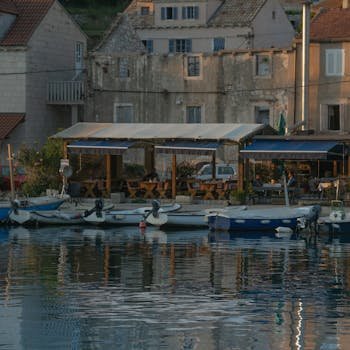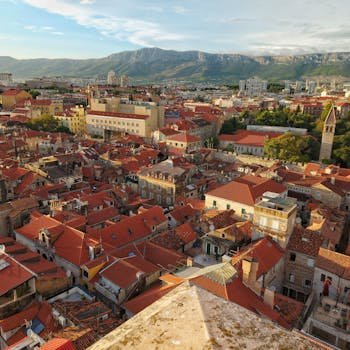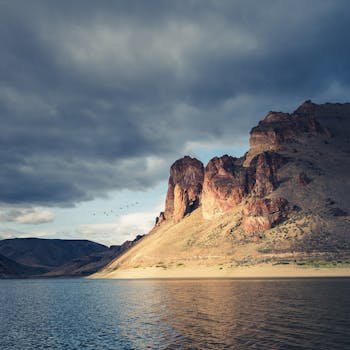Wildfires in Croatia: A Traveler’s Guide to Staying Safe on the Adriatic
Dreaming of sun-drenched beaches, crystal-clear waters, and exploring the historic towns along Croatia’s stunning Adriatic coast? You’re not alone! Croatia is a hugely popular travel destination. But, before you pack your bags, it’s crucial to be aware of a growing concern: Waldbrand Kroatien Adria, or wildfires along the Croatian Adriatic coast. These fires pose a significant risk, especially during the hot, dry summer months. This guide will equip you with the knowledge and practical tips you need to stay safe and informed during your trip.
In this comprehensive guide, we’ll cover:
- Understanding the wildfire risk in Croatia
- Practical tips for preventing wildfires
- What to do if you encounter a wildfire
- Essential resources and emergency contacts
- How climate change is impacting wildfires in the region
Understanding the Wildfire Risk in Croatia
Croatia, with its Mediterranean climate, is particularly vulnerable to wildfires. Hot, dry summers, combined with strong winds like the Bura and Jugo, create ideal conditions for fires to ignite and spread rapidly. The landscape, characterized by dry brush, pine forests, and rocky terrain, further exacerbates the problem.
Factors Contributing to Wildfires
- Climate: High temperatures and prolonged periods of drought significantly increase the risk.
- Vegetation: Dry scrubland and pine forests are highly flammable.
- Human Activity: Careless behavior, such as discarding cigarettes or improperly managing campfires, is a major cause of wildfires.
- Wind: Strong winds, particularly the Bura (a cold, dry north-easterly wind) and Jugo (a warm, humid south-easterly wind), can fan the flames and spread fires quickly.
According to data from the European Forest Fire Information System (EFFIS), Croatia experiences a significant number of wildfires each year, with the Dalmatian coast being particularly affected. While the exact number fluctuates annually depending on weather conditions, the trend shows an increase in both the frequency and intensity of wildfires in recent years. In 2022, Croatia experienced one of its worst wildfire seasons in recent history, with several large fires causing significant damage and requiring international assistance.
Regions Most at Risk
The Dalmatian coast, including popular tourist destinations like Split, Dubrovnik, Zadar, and the islands of Hvar, Brač, and Korčula, are particularly susceptible to wildfires. The combination of dense vegetation, dry conditions, and frequent strong winds makes these areas high-risk during the summer months.
Practical Tips for Preventing Wildfires
Preventing wildfires is everyone’s responsibility. By following these simple guidelines, you can help protect Croatia’s natural beauty and ensure a safer environment for yourself and others.
Be Mindful of Fire Hazards
- Never discard cigarettes carelessly: Ensure cigarettes are completely extinguished before disposing of them.
- Avoid open fires: Refrain from lighting campfires or barbecues in areas where they are prohibited or where there is a high risk of fire. Always use designated barbecue areas and ensure the fire is completely extinguished before leaving.
- Park responsibly: Avoid parking vehicles on dry grass or vegetation, as the hot exhaust can ignite a fire.
- Handle flammable materials with care: Store flammable liquids and gases in appropriate containers and away from heat sources.
Stay Informed and Prepared
- Monitor weather conditions: Pay attention to weather forecasts and be aware of fire warnings and advisories.
- Know the local regulations: Familiarize yourself with local fire regulations and restrictions.
- Report suspicious activity: If you see smoke or fire, report it immediately to the emergency services (112).
What to Do If You Encounter a Wildfire
If you encounter a wildfire, your safety is the top priority. Here’s what to do:
Evacuate Immediately
- Follow evacuation orders: Listen to the instructions of local authorities and emergency personnel.
- Move to a safe location: Evacuate to a designated evacuation center or a safe area away from the fire.
- Stay informed: Monitor local news and emergency broadcasts for updates.
Protect Yourself
- Cover your mouth and nose: Use a damp cloth or mask to protect yourself from smoke inhalation.
- Wear protective clothing: Wear long sleeves, long pants, and sturdy shoes to protect your skin from embers and heat.
- Stay low to the ground: Smoke rises, so stay low to the ground to breathe cleaner air.
If Evacuation Is Not Possible
- Find a safe shelter: Seek shelter in a building with a closed roof and walls.
- Seal windows and doors: Close all windows and doors to prevent smoke from entering.
- Wet down flammable materials: Wet down curtains, rugs, and other flammable materials.
Essential Resources and Emergency Contacts
Having access to reliable information and emergency contacts is crucial for staying safe during your trip to Croatia.
Emergency Numbers
- Emergency Services: 112 (This number connects you to police, fire department, and ambulance.)
- Fire Department: 193
- Police: 192
- Ambulance: 194
Useful Websites
- European Forest Fire Information System (EFFIS): https://effis.jrc.ec.europa.eu/ (Provides information on forest fires in Europe)
- Croatian Meteorological and Hydrological Service (DHMZ): https://meteo.hr/index_en.php (Provides weather forecasts and warnings)
- Civil Protection Directorate of the Republic of Croatia: (Information on disaster preparedness and response – Note: Official website in Croatian, use translation tools)
Local Authorities
Contact the local tourist information office or municipality for specific information on fire risks and safety measures in your area.
The Impact of Climate Change on Wildfires in Croatia
Climate change is exacerbating the wildfire situation in Croatia and around the world. Rising temperatures, prolonged droughts, and changes in vegetation patterns are creating more favorable conditions for fires to ignite and spread rapidly. Scientists predict that wildfires will become more frequent and intense in the future, posing a significant threat to Croatia’s ecosystems, economy, and public health.
Addressing climate change is crucial for mitigating the risk of wildfires in the long term. This requires global efforts to reduce greenhouse gas emissions and adapt to the changing climate. Locally, Croatia needs to invest in fire prevention measures, improve firefighting capabilities, and promote sustainable land management practices.
Conclusion: Enjoying the Adriatic Coast Safely
Wildfires are a serious concern in Croatia, particularly along the Adriatic coast. By understanding the risks, taking preventive measures, and knowing what to do in case of a fire, you can significantly increase your safety and help protect Croatia’s natural beauty. Remember to stay informed, be mindful of fire hazards, and follow the instructions of local authorities. With proper planning and awareness, you can enjoy a safe and memorable trip to Croatia’s stunning Adriatic coast. Before you go, share this guide with your friends and family who are planning a trip to Croatia. Your awareness and responsible behavior can make a real difference. Travel safe!









